Tractors in the Pacific Northwest are starting to go solo.
Robotics company Bluewhite recently entered the region’s market with a product called the Pathfinder — a bolt-on kit that transforms any tractor into a fully autonomous machine. With a Pathfinder attached, the tractor and its implements do everything they’ve always done — spray, mow, till, mulch, fertilize — but without the need for a human behind the wheel.
“It makes a dumb tractor smarter,” said Keith Veselka, owner of NWFM, a Washington farm management company that bought four units this season. “I’m excited to see what the technology can do.”
Bluewhite organized Pathfinder demonstrations in Pacific Northwest orchards this spring, and fruit growers are starting to buy the product. Veselka bought the Pathfinders to cut down on labor costs, an increasing concern in Washington state. He first learned about the Bluewhite technology in his role as co-chair of the Washington Tree Fruit Research Commission’s technology committee.
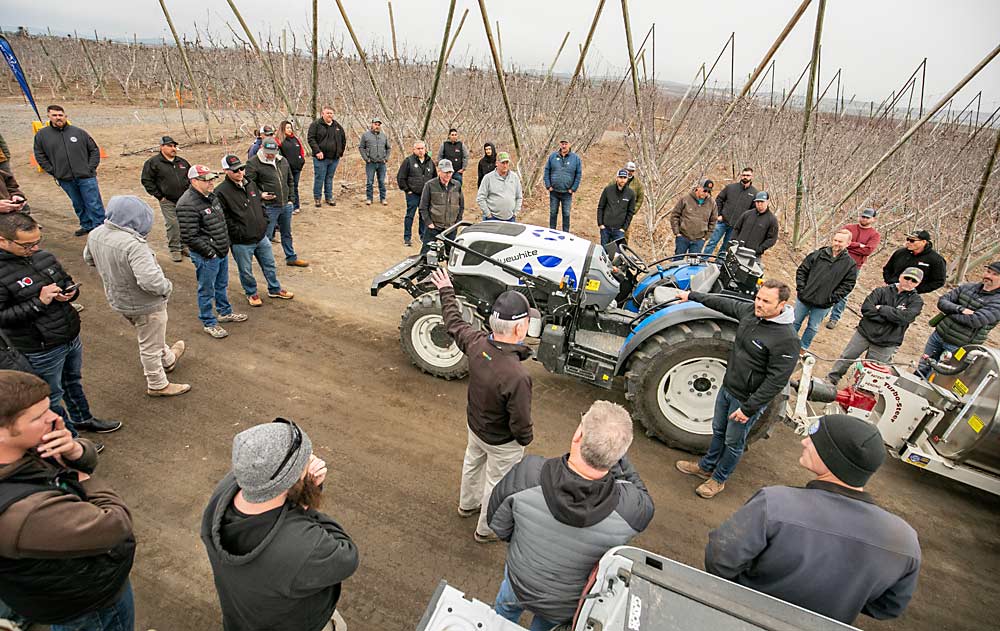
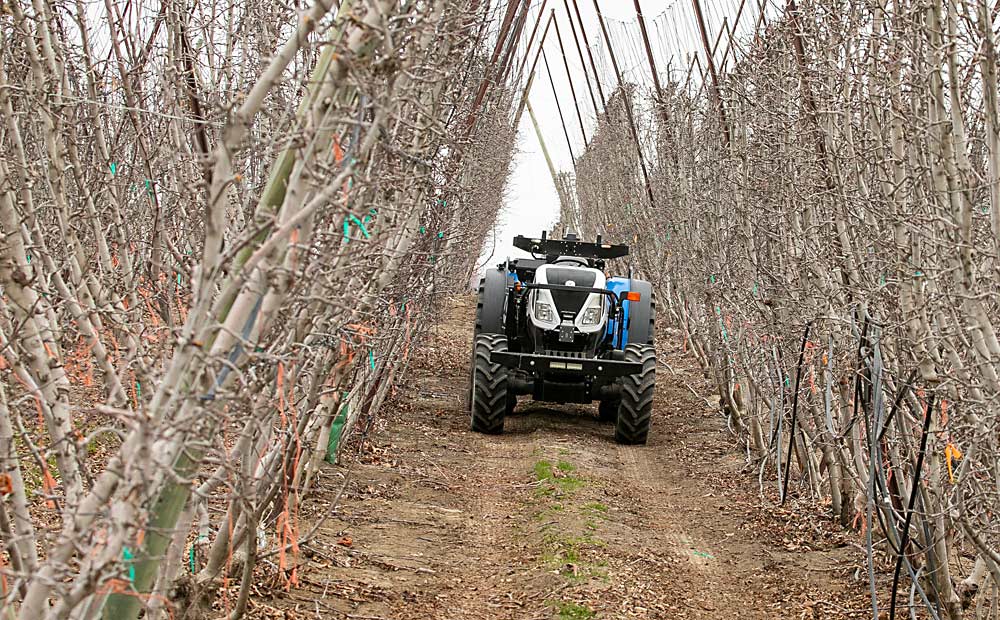
Other technology companies offer or are developing similar autonomy kits in different markets. Fleet-tracking technology company Fieldin introduced its autonomy kits in the California market this year and plans to enter the Washington market soon, said Alex Garcia, Fieldin’s director of sales for the Pacific Northwest.
Bluewhite started in Israel, where a small group of Israeli air force veterans founded the company in 2017, based on their experience with autonomous vehicles from their military days. They saw the need for such technology in agriculture, said director of partnerships Luke Hemphill, who’s based in Fresno, California, Bluewhite’s U.S. headquarters. The technology has been available in California since 2020.
Using Bluewhite software called Compass, which manages the Pathfinder technology, a human operator can control multiple autonomous tractors at once. He or she can plan out tractor tasks beforehand — tell the tractor to go down all of the even rows, for example, or drive down the rows at a certain speed, make turns at a certain speed, turn the sprayers on and off, drop the mower — and observe tractor progress during the tasks. There’s no technical limit to the number of autonomous tractors the operator can control, but in practice it’s probably best to run no more than an average crew size under a single operator, Hemphill said.
As for the human element, all you need is an operator and another worker who can refuel the tractors and perform other tasks such as refilling sprayers. Fewer workers are needed, and the potential for injuries is lessened. The Pathfinder can save growers 50 to 80 percent in operating costs while offering greater precision and productivity, said Bryan Riel, general manager of Burrows Tractor, Bluewhite’s distributor in Washington and Oregon.
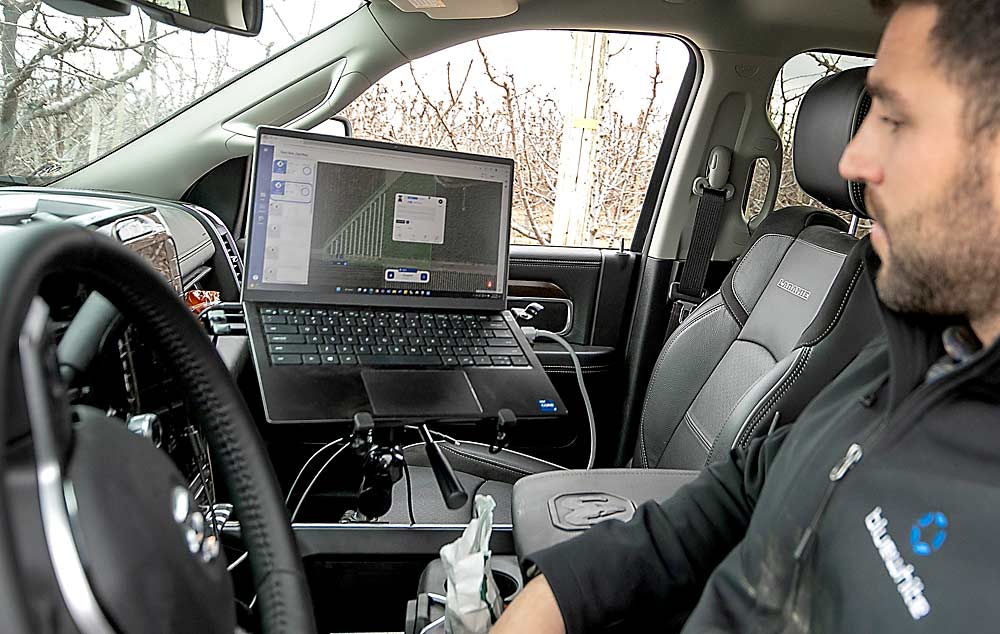
Riel declined to share price estimates, which include the hardware and a software subscription, saying the price depends on the number of units a customer is ordering. The subscription fee is about half the cost of paying a tractor driver, he said.
Burrows also works with Bluewhite on initial setup and training, Riel said.
Another advantage of the technology is that it allows growers to modify an existing tractor instead of buying a new one, Riel said, although new tractors with autonomous capabilities from several manufacturers are also entering the market.
Hemphill said the Pathfinder kit is attached using “all existing holes and is seamless to the tractor.” There’s still room for the tractor to be driven manually if needed, with the flip of a switch.
Three sensors inform the Pathfinder: camera, lidar and GPS. Real-time sensor fusion blends all three sensors to create a clear image of the path ahead, Hemphill said. Lidar is the primary sensor, but one of the other sensors takes control if its signal drops out. If the sensors detect an object — post, wire, dropped limb, animal, person, equipment — in the tractor’s path or periphery, the Pathfinder stops the tractor and notifies the operator.
The technology can work with any crop, but right now Bluewhite is focusing on permanent crops like pistachios, almonds, fruit and hops because the labor needs are more acute. The Pathfinder is geared toward “mid to large operations,” Hemphill said. It might not make sense for someone running one tractor at a time.
—by Matt Milkovich
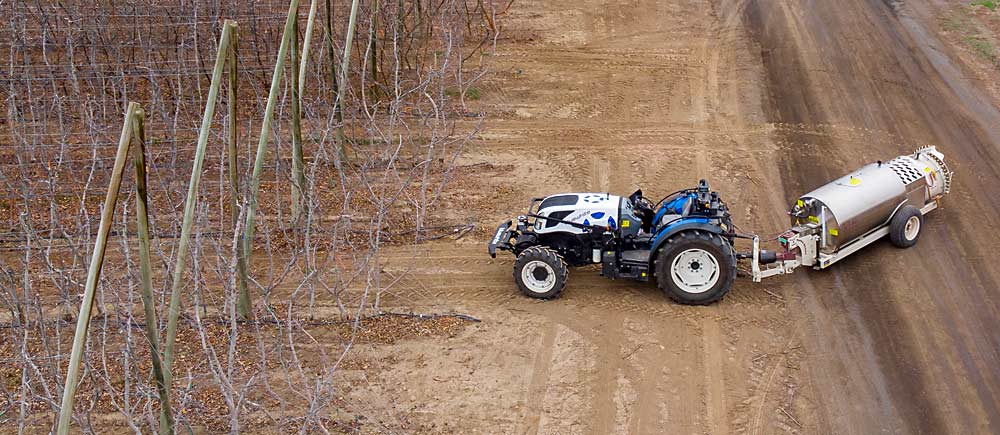

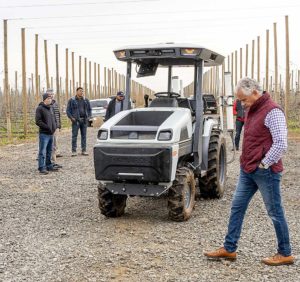





Leave A Comment